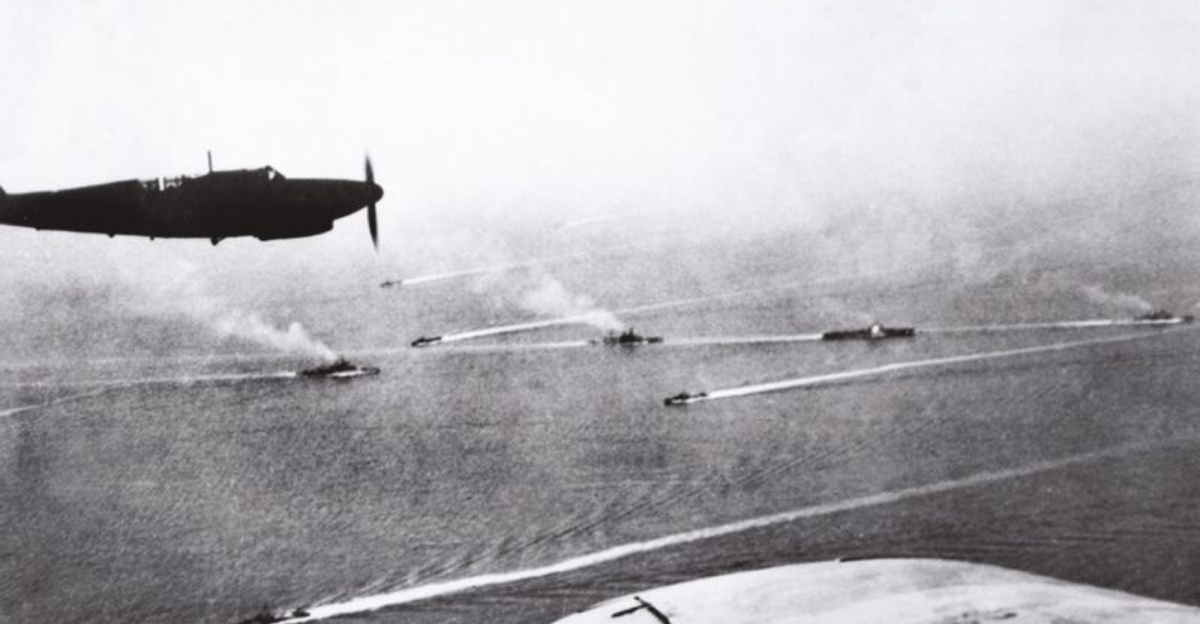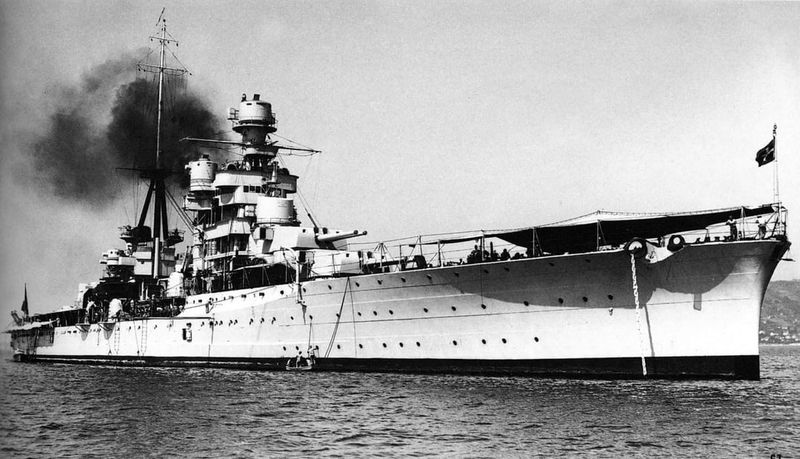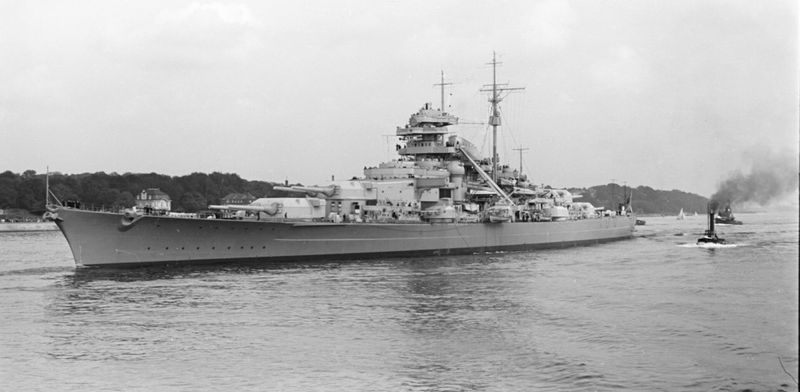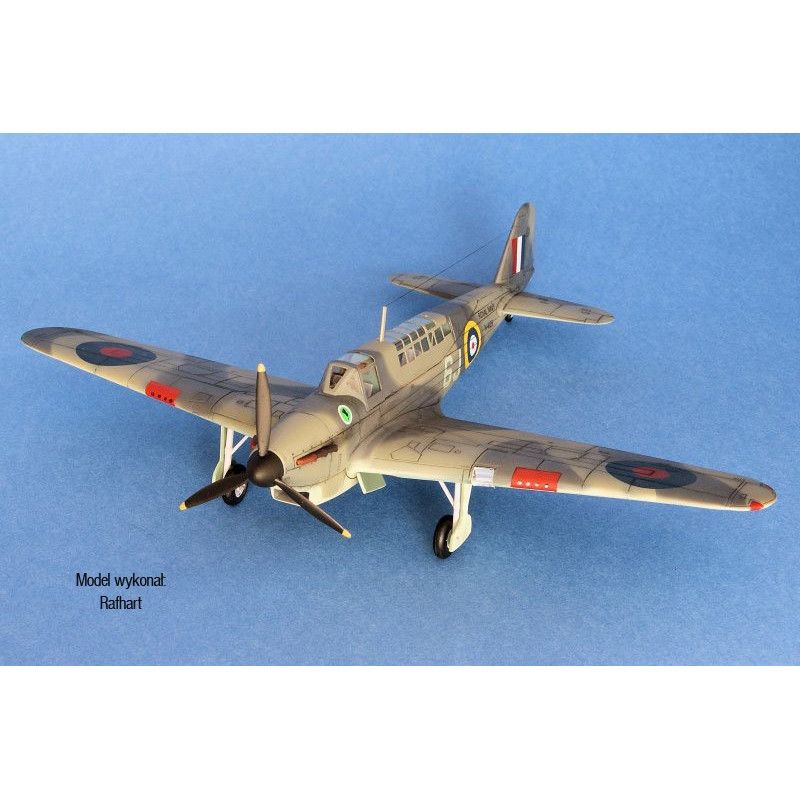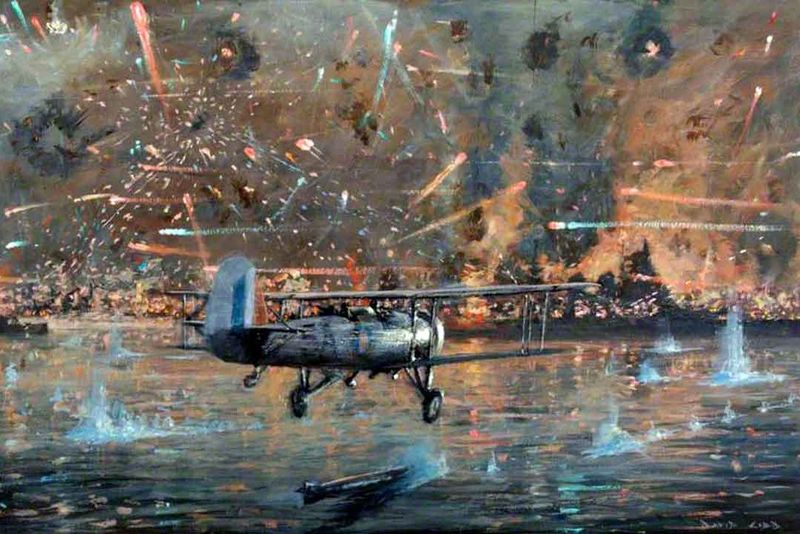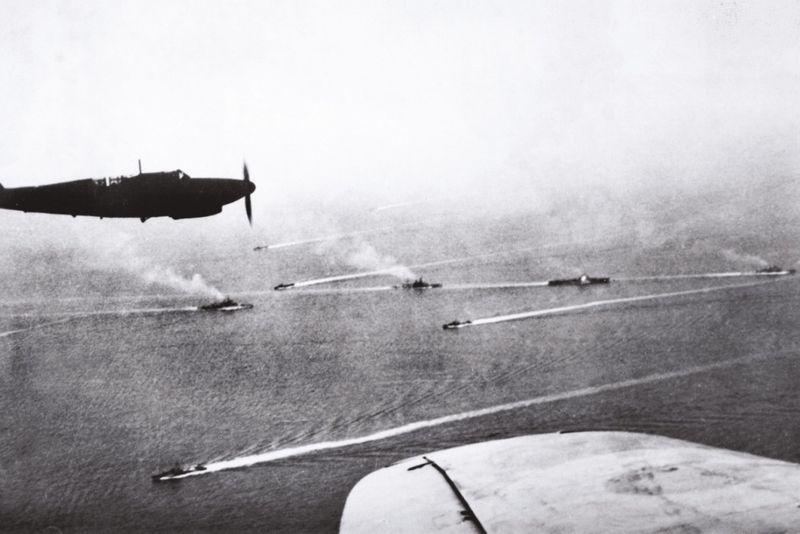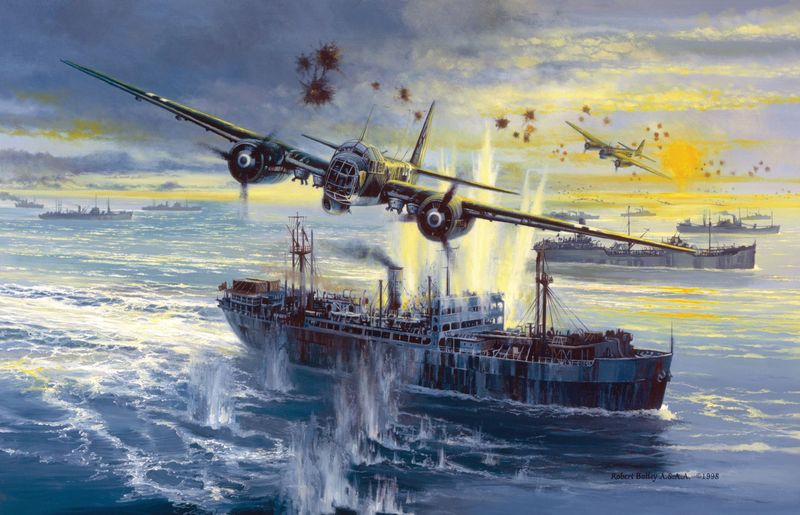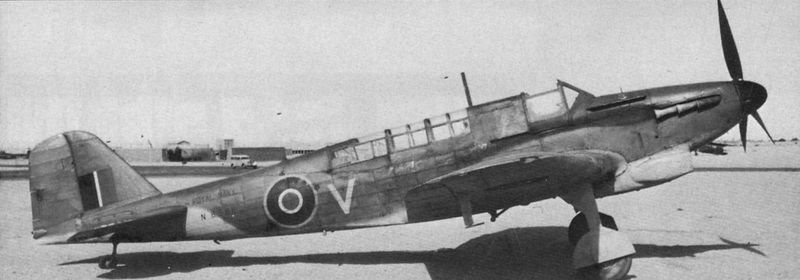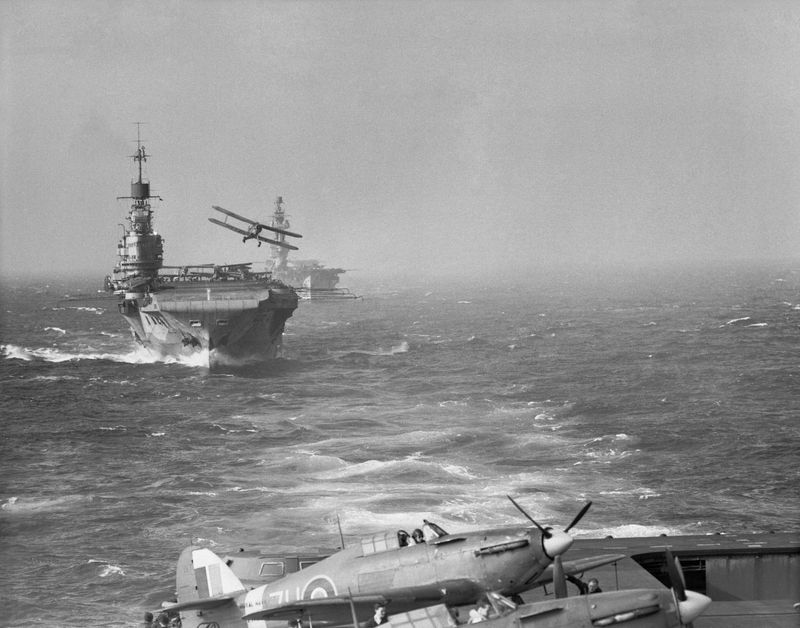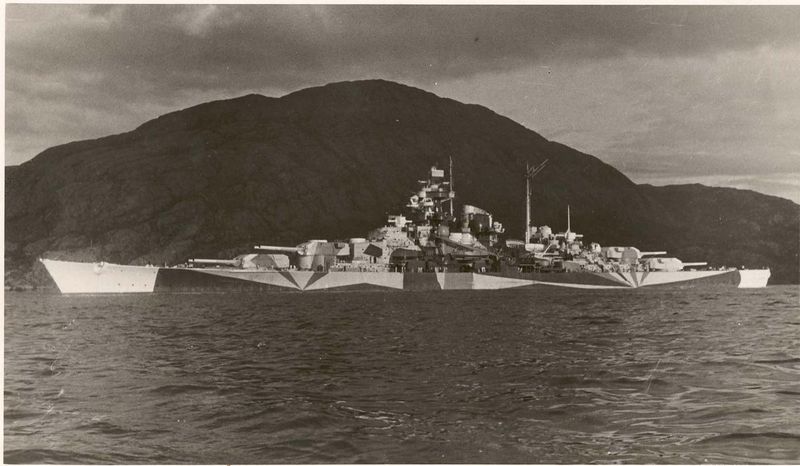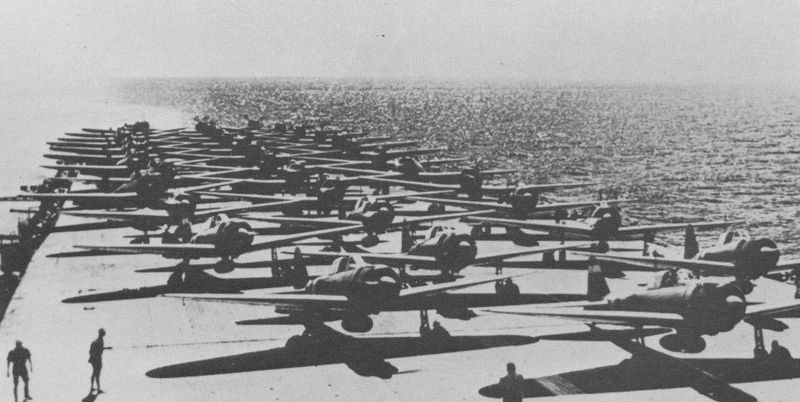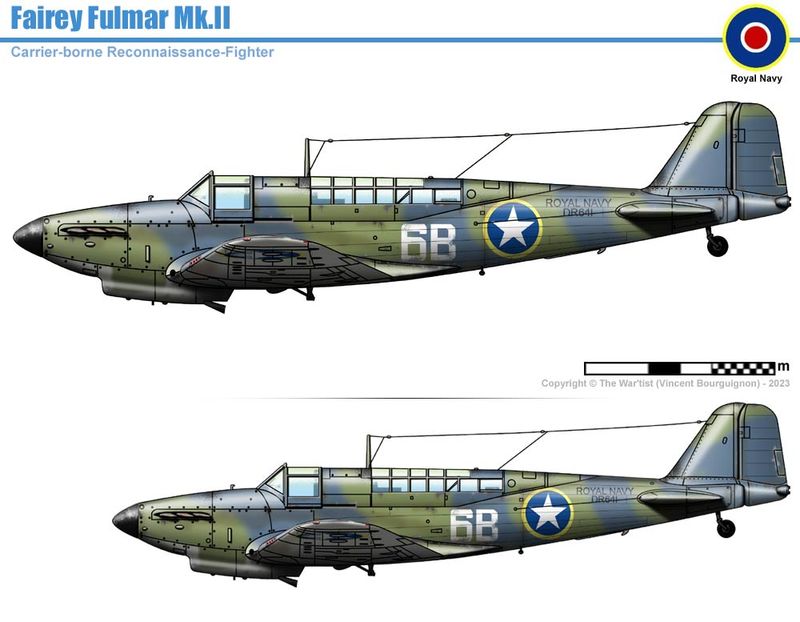Often overshadowed by flashier fighters, the Fairey Fulmar—a British naval aircraft—earned its fearsome nickname “Sky Assassin” by proving time and again that it was a deadly force in the skies. These are 11 of its most devastating wartime moments.
1. Sinking of the Italian Cruiser Zara
Amidst the dark cloak of night, the Fulmar played a pivotal role in sinking the Italian cruiser Zara. The sky was a canvas of fire and smoke, as these naval aircraft dove fearlessly into the fray.
Their audacious maneuvers were not mere acts of aggression but calculated strategies that led to the destruction of three heavy cruisers.
The Zara’s end wasn’t just a victory; it was a testament to Fulmar’s ability to navigate and conquer even the most treacherous night-time engagements, turning the tide of naval warfare in favor of the Allies.
2. The Bismarck Chase (May 1941)
Engulfed in relentless rain and swirling winds, the Fulmar relentlessly pursued the elusive Bismarck, Germany’s formidable battleship. Not the final blow in the chase, but the Fulmar’s contribution was indispensable.
As they sliced through stormy skies, these aircraft provided indispensable reconnaissance, maintaining visual contact that guided the British fleet.
This wasn’t just about tracking a target; it was a high-stakes game of cat and mouse where every sighting was a step closer to neutralizing a formidable threat, underscoring the Fulmar’s strategic importance.
3. Malta Convoy Operations (1941–42)
In the sun-drenched skies over the Mediterranean, the Fulmar danced through the air, a guardian of the convoys below.
During the Malta Convoy Operations, these aircraft were not just defensive tools; they were vital lifelines, engaging Italian and German bombers in fierce aerial combat. Each dogfight was a testament to the Fulmar’s resilience and agility, ensuring the safe passage of crucial supplies to Malta.
Here, the skies were both battlefield and shield, and the Fulmar was the stalwart protector ensuring that life-sustaining convoys reached their besieged destination.
4. Battle of Taranto Support Missions
In the wake of the daring British aerial strike on Taranto, the Fulmar took on a critical supporting role. The sky was a theater of operations where Fulmars escorted retreating strike forces with precision and bravery.
These missions weren’t just about escorting; they were about maintaining the delicate balance of air superiority, providing reconnaissance that was crucial for strategic withdrawals.
The Fulmar’s presence in these support missions was a linchpin for success, their vigilant eyes ensuring the safe return of British forces from this groundbreaking assault.
5. The Battle of Cape Matapan (March 1941)
In the glowing light of dusk, the Fairey Fulmar soared over the Mediterranean, its engine humming a tune of impending chaos. At the Battle of Cape Matapan, the Fulmar proved its mettle by pinpointing enemy ships amidst the sea’s endless expanse.
These aircraft didn’t just spot their targets; they strategically disrupted the Italian fleet’s formations, providing a crucial upper hand to the British torpedo bombers below.
This tactical advantage was not merely about engaging the enemy; it was about orchestrating a symphony of precision and might, ensuring the Italian fleet’s crippling defeat.
6. Arctic Convoy PQ 17 (1942)
In the frigid expanse of the Arctic, where day and night blend into a chilling grey, the Fulmar proved its mettle once more. Protecting the vital Arctic Convoy PQ 17, these aircraft faced extreme weather and relentless Luftwaffe assaults.
The icy wind whipped against their wings, but the Fulmars stood firm, downing enemy aircraft with unyielding resolve.
This wasn’t merely a battle against enemy forces; it was a battle against the elements themselves, with the Fulmar emerging as a steadfast guardian of the frozen seas, ensuring the convoy’s crucial passage.
7. Defense During the Syria-Lebanon Campaign (1941)
In the lesser-known theaters of the Middle East, the Fulmar soared above the arid landscapes of Syria and Lebanon. Providing essential air cover, these aircraft supported British and Commonwealth ground troops against Vichy French forces.
Each sortie was a blend of valor and vigilance, ensuring ground operations proceeded with an aerial advantage.
The Fulmar’s presence in this campaign was not only strategic but emblematic of its versatility and reach, extending its protective wing to lesser-known battlefields and contributing to the broader Allied efforts in the region.
8. Operation Pedestal (August 1942)
Amidst the perilous waters of the Mediterranean, Operation Pedestal unfolded as a desperate bid to resupply Malta. Fulmars, ever vigilant, shielded the convoy from relentless enemy assaults, engaging in ceaseless aerial skirmishes.
Though many ships were lost, the Fulmars never wavered, their determination a beacon of hope.
These aircraft weren’t just fighters; they were a lifeline, ensuring that the besieged island of Malta could hold out against Axis powers, their tireless efforts a testament to their unwavering spirit and crucial role in this critical mission.
9. Escorting Strikes on the Tirpitz (1942–43)
In the shadowy fjords of Norway, the Fulmar took on a daunting adversary: the Tirpitz, Germany’s formidable battleship. These aircraft served as the eyes of the sky, providing reconnaissance and strategic oversight during Allied operations.
Each mission was a blend of stealth and daring, as Fulmars navigated the treacherous terrains to keep the Tirpitz at bay.
This wasn’t merely about engaging the enemy; it was about outsmarting it, ensuring that the “Beast of the North” posed no threat to Allied convoys, and securing the waters for future operations.
10. Carrier Raids in the Indian Ocean (1942)
In the vast expanse of the Indian Ocean, where sky and sea are endless, the Fulmar faced a new kind of foe. Japanese carrier raids tested these aircraft, but their resilience was unmatched.
Holding their own against agile enemy planes, Fulmars provided crucial defense to British fleets. This wasn’t just about survival; it was about maintaining dominance in a theater where Allied air support was sparse.
The Fulmar’s role in these raids underscored its adaptability and courage, ensuring that even in distant waters, the British fleet remained unwavering, ready to confront any threat.
11. The Fulmar’s Final Fight: Operation Torch (1942)
In the sun-baked skies over North Africa, the Fulmar took off for one of its last missions—Operation Torch. Though outmatched by newer aircraft, these stalwart machines flew escort for the Allied landings, providing reconnaissance and combat support.
This was not merely a farewell; it was a testament to the Fulmar’s enduring spirit and versatility.
Each flight was a tribute to its legacy, ensuring that until its very last sortie, the Fulmar remained a steadfast guardian, contributing to the Allied success in the desert sands of North Africa.
